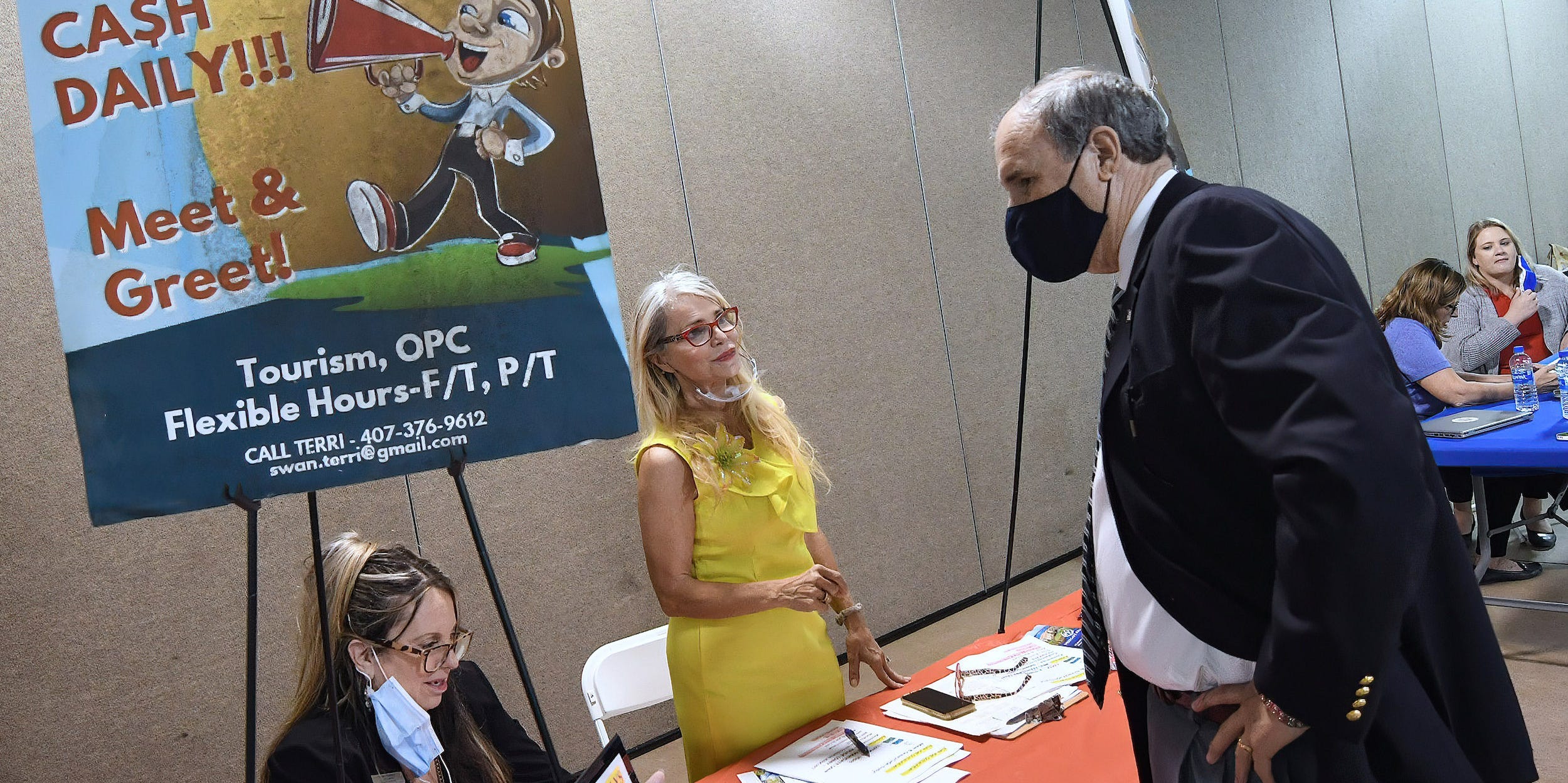
Paul Hennessy/SOPA Images/LightRocket/Getty Images
- The US won't return to full employment until the fourth quarter of 2022, Fitch Ratings said Wednesday.
- Matching workers' skills with new jobs will take time, as will a rebound in workforce participation.
- Some workers – particularly older Americans – are likely permanently discouraged from work, Fitch added.
- See more stories on Insider's business page.
The good news: The US labor market is well on its way to a full recovery.
The bad news: It's going to take a while to get there.
After improving steadily through 2021, the disappointing April jobs report signaled the labor market's rebound wouldn't be as smooth as most hoped. With labor shortages and supply bottlenecks now dragging on the broader recovery, economists are updating their employment projections to account for numerous new hurdles.
Fitch Ratings economists joined the crowd on Wednesday. The team led by Brian Coulton sees a return to full employment arriving in the fourth quarter of 2022, about 15 months from today. The unemployment rate will fall to 4.3% from the April reading of 6.1%, and the employment-to-population ratio will return to a steady state, the team added.
Filling the hole in the labor market requires creating 7 million jobs, but a handful hurdles stand in the way of such an achievement, according to the team.
(1) The dangers of long-term unemployment
Bringing Americans back into the workforce is crucial to bringing about a full recovery, and those who've been out of it the longest present a significant challenge.
Almost 30% of unemployed Americans have been out of the labor force for more than a year, and that share is growing, Fitch said in a note to clients.
Bouts of unemployment lasting more than a year are far more likely to turn into permanent detachment from the workforce. Bringing the country to full employment will hinge on bringing the long-term unemployment rate from its latest reading of 1.8% closer to its pre-pandemic norm of 0.5%, the team said.
(2) Matching workers' skills with the right job
Various economists and officials have warned that, while the economy will fully rebound, it won't look the same as it did in early 2020.
Some jobs will be permanently erased, and others will crop up elsewhere as the post-pandemic economy takes form. Those structural shifts in where labor is in demand will force some unemployed Americans to either move or change their skillsets entirely.
"Rapid changes in the sectoral demand for labor can lead to lasting increases in unemployment if workers made unemployed in shrinking industries are unable to move into other sectors," the economists said.
(3) Some participation won't return until well after reopening
The labor force participation rate took on new relevance during the pandemic as millions of Americans who lost their jobs didn't look for new roles and dropped out of the workforce entirely.
The rate sank from 63.4% in January 2020 to a pandemic low of 60.2% in April of last year. Yet after $5 trillion in stimulus, vaccine distribution, and progress toward a full reopening, labor force participation stood at 61.7% last month.
"While we believe a large share of the fall will be reversed as the economy opens up there is also a likelihood that some people have permanently left the workforce," Fitch said. Such a dynamic would persistently drag on the labor market until more Americans join the workforce.
(4) Many older workers are out for good
The participation rate for Americans aged 55 and older shows a particularly concerning trend.
The rate dove to 38.4% at the peak of the pandemic's onset and sat even lower, at 38.3%, last month. That contrasts sharply from rates for other age groups, which have retraced at least half of their pandemic-era declines.
The trend is also unlikely to be linked to early retirement, Fitch said. The number of retirees rose by 1.24 million in 2020, according to social security data. That's less than the 1.37 million jump seen the year prior.
If the trend continues throughout reopening, it "could signal permanent discouragement from the labor force among older workers," the team said.











